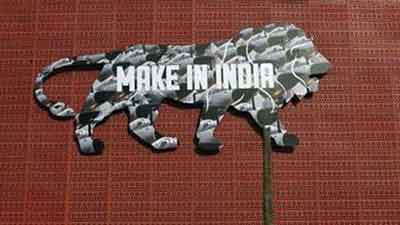Date: 24/02/2023
Relevance: GS-3: Indian Economy and issues relating to planning, mobilization, of resources, growth, development and employment.
Key Phrases: Economic Model, Oligopolies, Conglomerates, Manufacturing, Growth, Asian Tigers, Make in India, Artificial Intelligence, Business Services, Fintech.
Context:
- India has shifted towards an economic model that features a small number of 'national champions' - effectively large private oligopolies that control significant portions of the traditional economy.
India’s Potential on the World Stage:
- With its large and expanding population and a per capita GDP only one-fourth that of China, India has tremendous potential for economic growth and increased productivity.
- India's democracy, characterized by cultural diversity, is expected to generate considerable soft power comparable to that of the US and UK, while its military and geopolitical significance is projected to increase further.
- Government has been implementing policies that have modernized India and
supported its growth.
- Robust economic performance following the covid slump can be attributed to a combination of investments in infrastructure, industrial policies aimed at accelerating domestic manufacturing, India's comparative advantage in technology and IT, and a customized digital-based welfare system.
Risks to India’s Development Prospects:
- The same model that propelled India's growth could now impede it, as the risks to its development prospects are rooted in micro and structural factors rather than macroeconomic or cyclical ones.
- India has shifted towards an economic model that features a small number
of 'national champions' - effectively large private oligopolies
that control significant portions of the traditional economy.
- This trend resembles that of Indonesia under Suharto (1967-98), China under Hu Jintao (2002-12), or South Korea in the 1990s, where dominant chaebols (rich families) were the norm.
- To some extent, India has benefited from this concentration of
economic power. Despite investment rates (as a percentage of GDP) much lower
than China's, the Indian economy has grown rapidly.
- However, the downside of this economic model is that these conglomerates have been able to exert influence over policy making to advance their own interests.
Probable Consequences of the Model:
- This economic model has had two major and negative consequences:
- First, it is stifling innovation and essentially eliminating early-stage startups and domestic entrants in key industries
- Second, it is transforming the government's 'Make in India' program into a counterproductive and protectionist initiative.
- India's potential for growth appears to have declined rather than
accelerated, which may be a result of the negative effects mentioned
above.
- Just as the Asian Tigers did well in the 1980s and 1990s with a growth model based on gross exports of manufactured goods, India has done the same with exports of tech services.
- The 'Make in India' program was created to bolster India's
tradable sector by promoting the production of goods not just for the
domestic market, but also for export.
- However, India is shifting towards a more protectionist approach that prioritizes import-substitution and subsidies for domestic production, with a nationalistic undertone.
- These policies are shielding domestic industries and conglomerates from
global competition, but they are also hindering India's competitiveness
in the export of goods due to its tariff policies.
- Additionally, India's reluctance to participate in regional trade agreements is obstructing its complete integration into global value and supply chains.
- The 'Make in India' program faces another challenge as it has shifted towards promoting labor-intensive industries like cars, tractors, and trains. India should concentrate on sectors where it has a comparative advantage, such as artificial intelligence, fintech, tech, and IT services.
- India requires fewer traditional industries like scooters and
more startups that are focused on the Internet of Things.
- To promote these dynamic sectors, policymakers should set up special economic zones, as done by other successful Asian economies. Without such reforms, 'Make in India' will continue to yield suboptimal outcomes.
Conclusion:
- The Asian financial crisis that occurred in the 1990s provided
evidence that the partial control of economic policies by crony capitalist
conglomerates can negatively impact productivity growth.
- This occurs by hindering competition, suppressing Schumpeterian 'creative destruction,' and widening the wealth gap.
- Therefore, it is imperative for the Indian government to avoid following the same path.
- The success of India in the long run will be determined by whether it can establish and maintain a growth model that is equitable, inclusive, sustainable, dynamic, and competitive.
Source: Live-Mint
Mains Question:
Q. What is Crony Capitalism? Why it is widely blamed for a range of social and economic woes. Critically analyze (150 words).






















